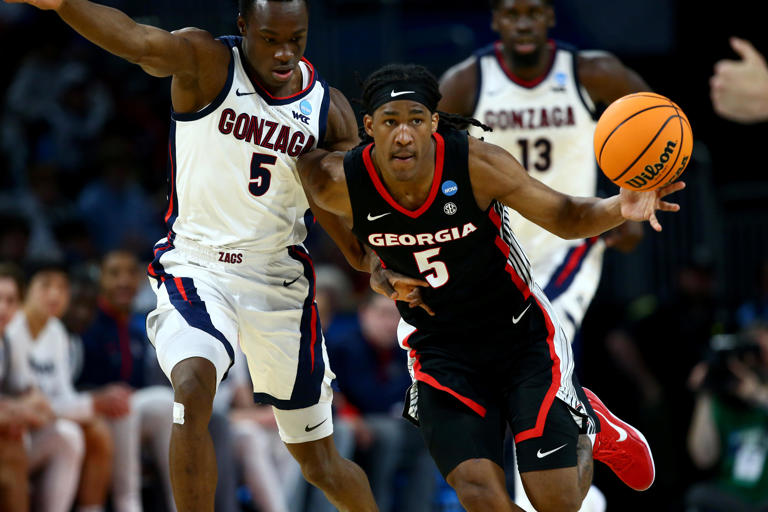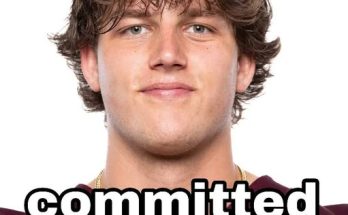Kentucky basketball has long been known for its ability to attract elite talent, whether through high school recruiting or the transfer portal. Under new head coach Mark Pope, the Wildcats are taking a strategic approach to roster construction, ensuring they have the right mix of players to compete at the highest level. Recently, it has been confirmed that Kentucky will not be considering another point guard option via the transfer portal. This decision is significant, as it sheds light on the coaching staff’s confidence in their current backcourt and their overall roster strategy.
In today’s era of college basketball, where the transfer portal plays a crucial role in shaping rosters, many programs look to add experienced guards to bolster their playmaking ability. However, Kentucky’s decision to stand pat at the point guard position suggests that Pope and his staff are satisfied with the talent they already have. Rather than bringing in another floor general, they appear confident in the players currently on the roster and their ability to run the offense effectively.
One of the primary reasons Kentucky is choosing not to pursue another point guard is the presence of talented options already in place. Whether it be returning players, incoming freshmen, or previous transfer commitments, the Wildcats believe they have the right mix of ball-handlers and playmakers to lead the team. A key factor in this decision is likely the skill set of the current guards, who have demonstrated the ability to control the tempo, distribute the ball, and create scoring opportunities for themselves and their teammates.
Additionally, Pope’s offensive system plays a role in this decision. Unlike some coaches who prefer a traditional, ball-dominant point guard, Pope’s system emphasizes ball movement, positional versatility, and shared playmaking responsibilities. This approach allows multiple players to contribute as facilitators rather than relying solely on one individual to run the offense. By not adding another point guard, Pope is signaling confidence in his current backcourt and their ability to execute his game plan.
Another important factor is team chemistry. Bringing in a transfer at the point guard position could potentially disrupt the dynamic of the roster. The players currently in the program have had time to build relationships and develop chemistry on the court. Adding a new floor general at this stage could alter roles and affect team cohesion. By sticking with their current options, Kentucky ensures stability in the backcourt and allows players to grow into their leadership roles organically.
This decision also highlights the coaching staff’s faith in player development. Rather than searching for a quick fix in the transfer portal, Kentucky appears committed to helping their current guards improve and maximize their potential. This approach could pay dividends in the long run, as it allows players to gain experience, develop confidence, and take ownership of their roles. It also signals to future recruits that Kentucky is a place where guards can develop and thrive without the constant threat of being replaced by transfers.
Recruiting philosophy also plays a role in this decision. Kentucky has traditionally been a program that attracts top-tier high school talent, particularly at the guard position. By not adding another point guard from the transfer portal, the Wildcats are likely making a statement to incoming recruits that they will have opportunities to play significant minutes and develop within the program. This move could be particularly appealing to elite high school prospects who want assurances that they will have a clear path to playing time.
The financial implications of roster management in the NIL era cannot be ignored either. With limited resources to allocate among players, Kentucky may have determined that investing in other positions is a better use of funds. Rather than bringing in another point guard, the coaching staff may prefer to use NIL resources to strengthen other areas of need, such as frontcourt depth or perimeter shooting. This strategic allocation of resources ensures that the team remains balanced and competitive.
Another consideration is the style of play Kentucky wants to implement next season. Pope has emphasized an up-tempo, modern style of basketball that does not necessarily require a traditional pass-first point guard. Instead, he favors a system in which multiple players are capable of initiating the offense. This philosophy allows for greater flexibility and reduces the need for a single ball-handler to carry the team. Given this approach, it makes sense that Kentucky would choose not to add another point guard, instead relying on their current guards to share playmaking duties.
Defensively, this decision also makes sense. Rather than prioritizing another point guard, Kentucky may be looking for players with more size and versatility who can guard multiple positions. Modern basketball values switchability and defensive flexibility, and having a lineup full of capable ball-handlers rather than relying on one primary point guard can be advantageous. This strategy allows Kentucky to match up better against different opponents and maintain a high level of defensive intensity.
While some fans may be concerned about not adding another veteran point guard, this decision ultimately reflects confidence in the roster’s existing talent. The coaching staff has thoroughly evaluated their options and determined that the current group is capable of handling the responsibilities of running the team. This move also signals that Pope is taking a long-term approach to roster construction rather than seeking short-term fixes.
In the ever-changing landscape of college basketball, roster decisions like this one can define a program’s direction. Kentucky’s choice to stand firm at the point guard position indicates a clear vision for the team and a belief in the current players’ ability to execute that vision. While the transfer portal remains an important tool for acquiring talent, it is equally important to know when to exercise restraint and trust the process.
As the offseason progresses, Kentucky will continue to focus on other areas of need while preparing the current roster for the upcoming season. This decision to forgo another point guard addition may prove to be a defining moment, allowing the Wildcats to build continuity, foster development, and maintain a balanced roster. With a talented group of guards already in place, Kentucky is well-positioned to compete at a high level without making additional moves at the position.
Ultimately, the coaching staff’s confidence in their current point guard options is a strong indicator of their belief in the team’s overall direction. By prioritizing stability, development, and roster balance, Kentucky is making a calculated decision that could pay off in the long run. As the season approaches, all eyes will be on the Wildcats to see how their backcourt performs and whether this decision proves to be the right one.



